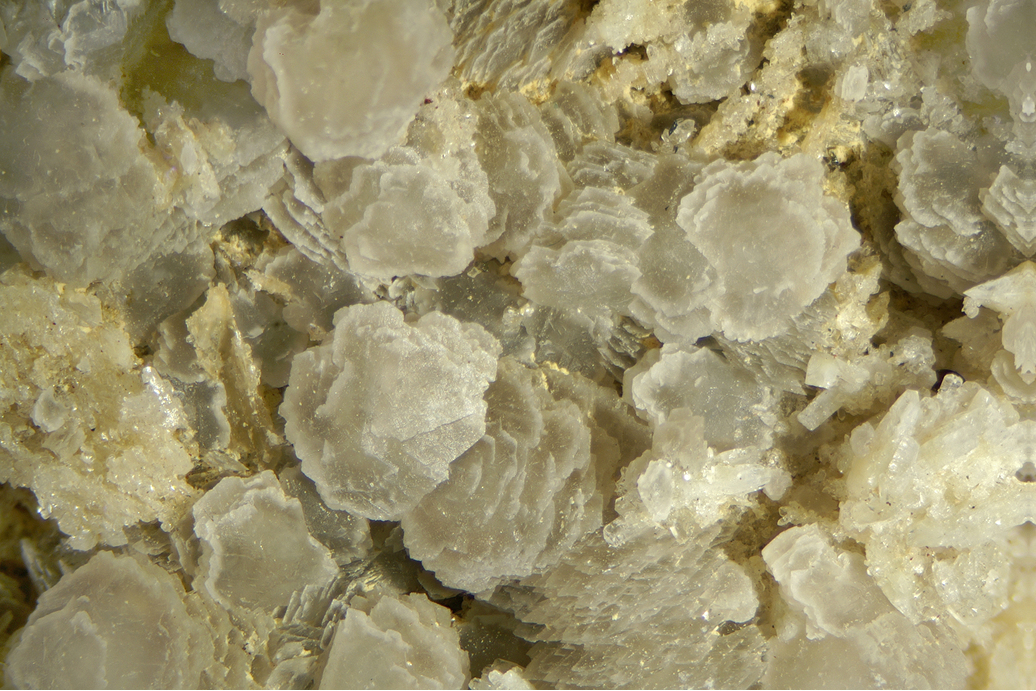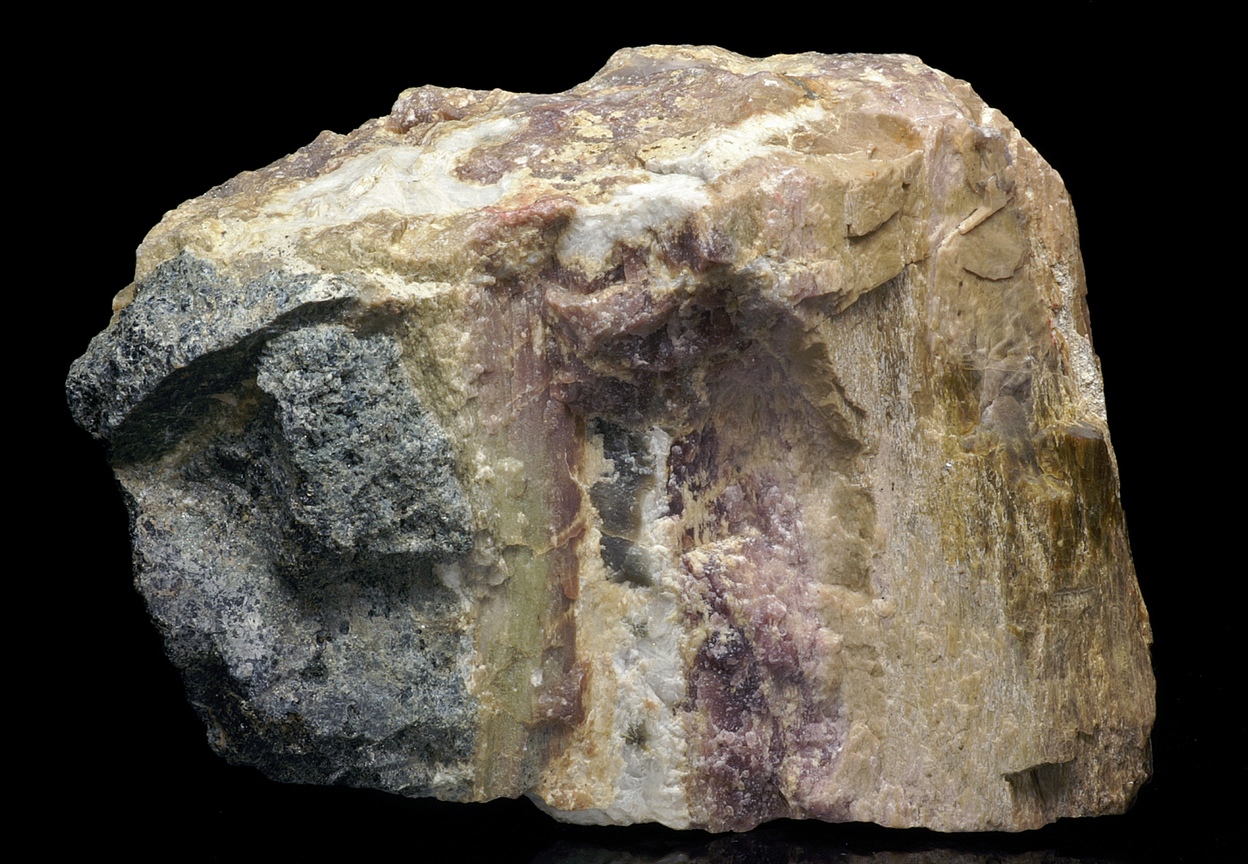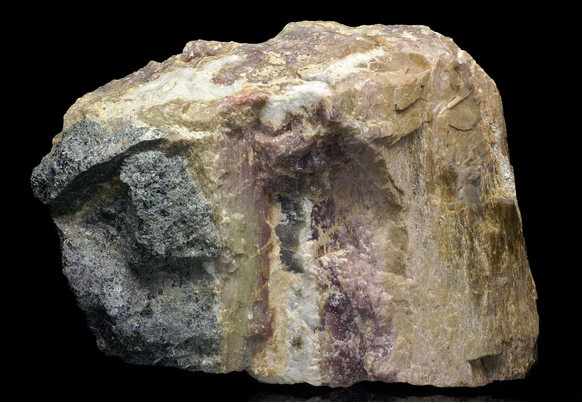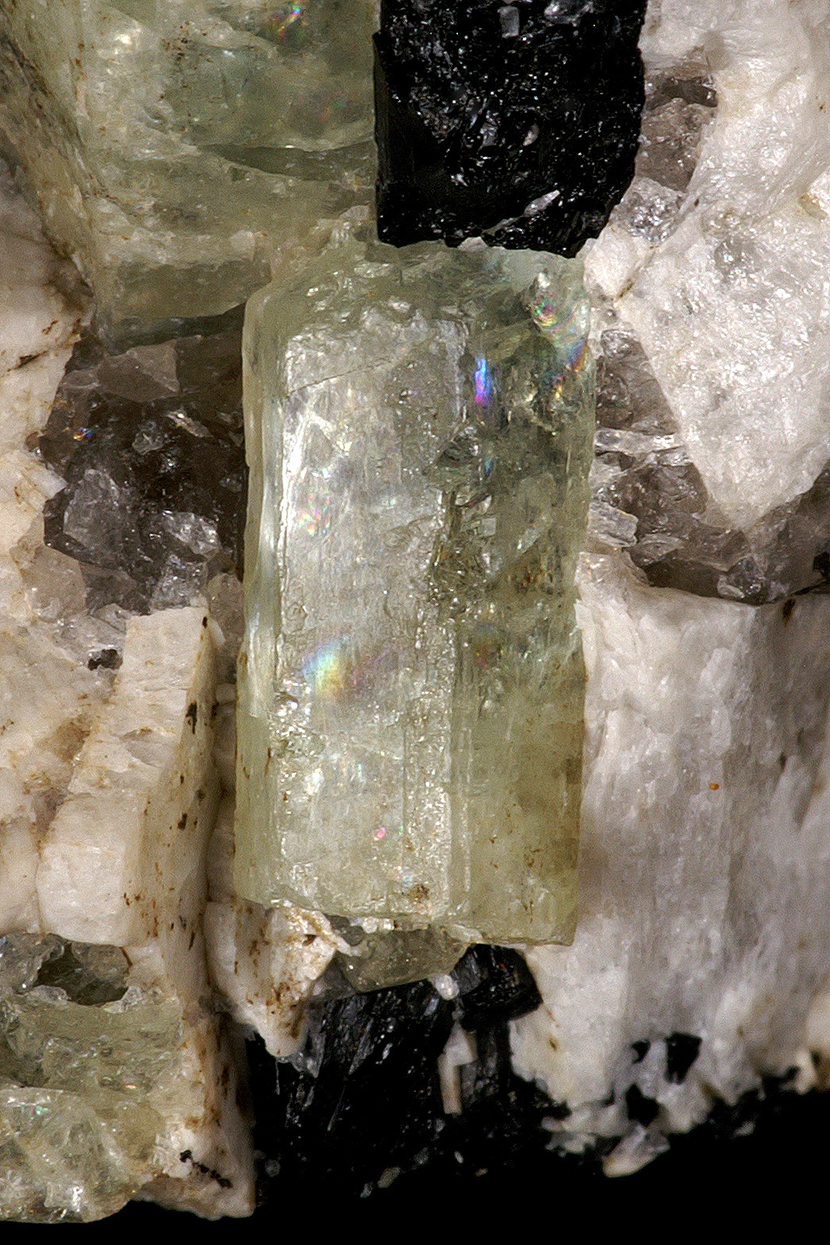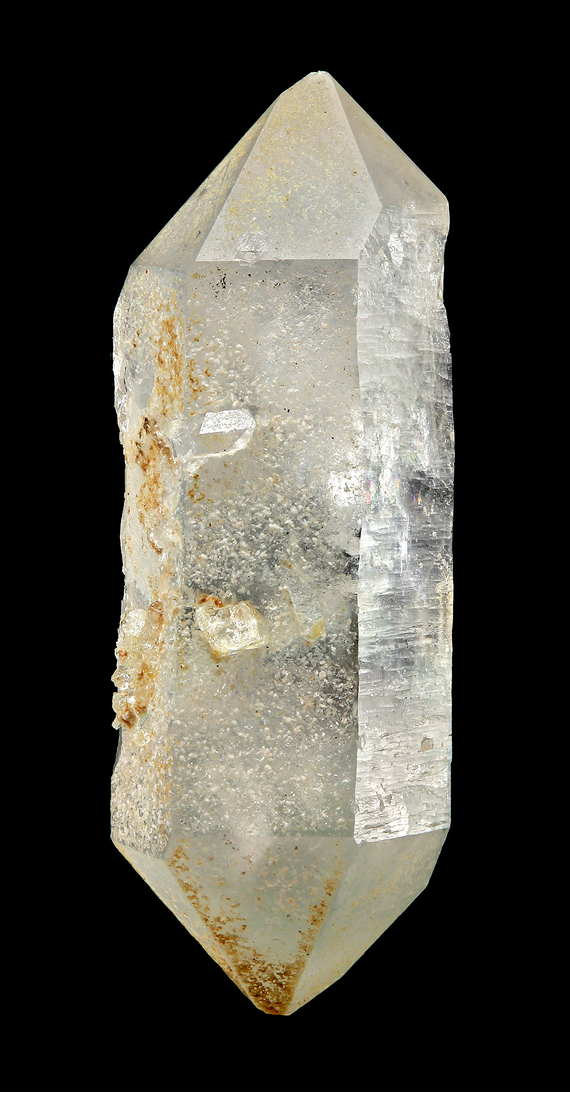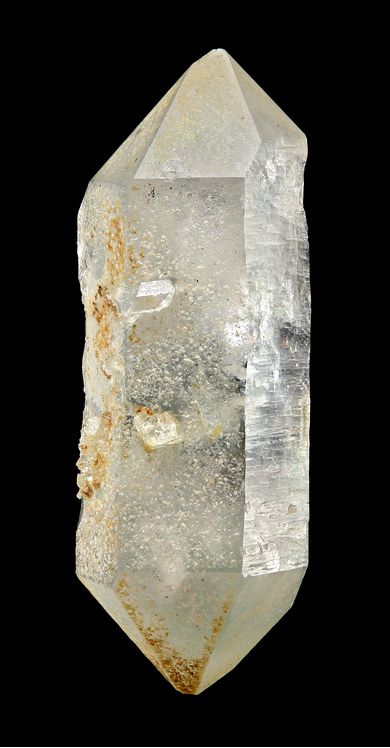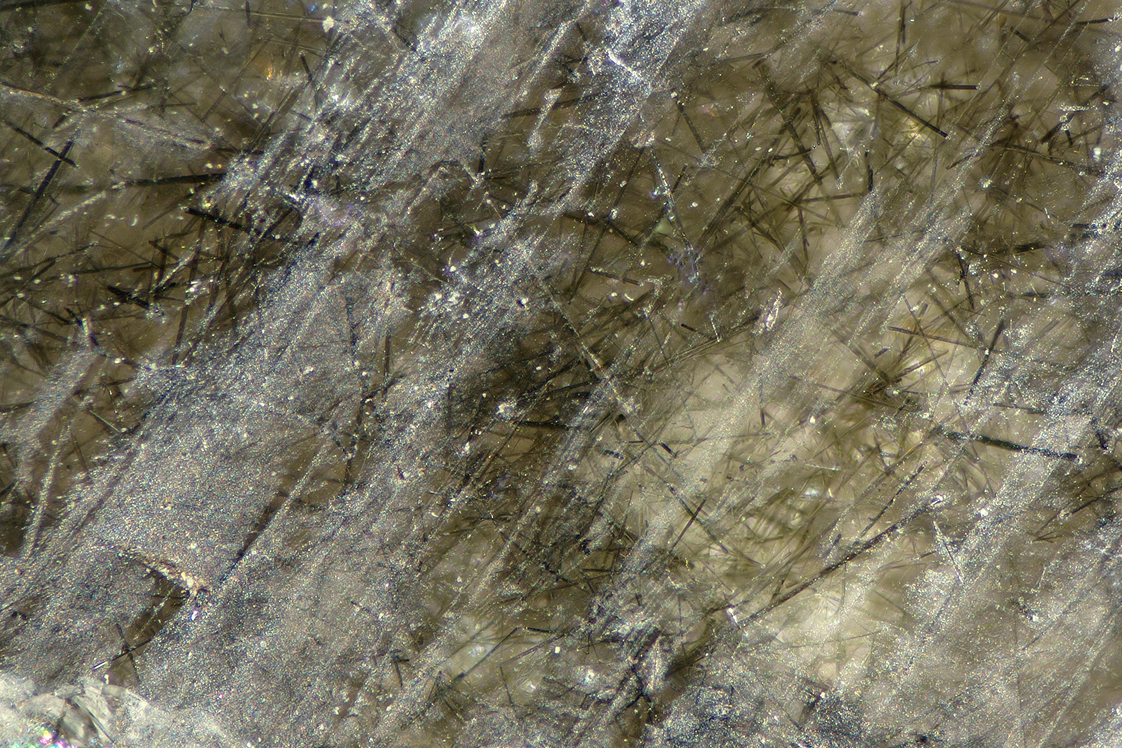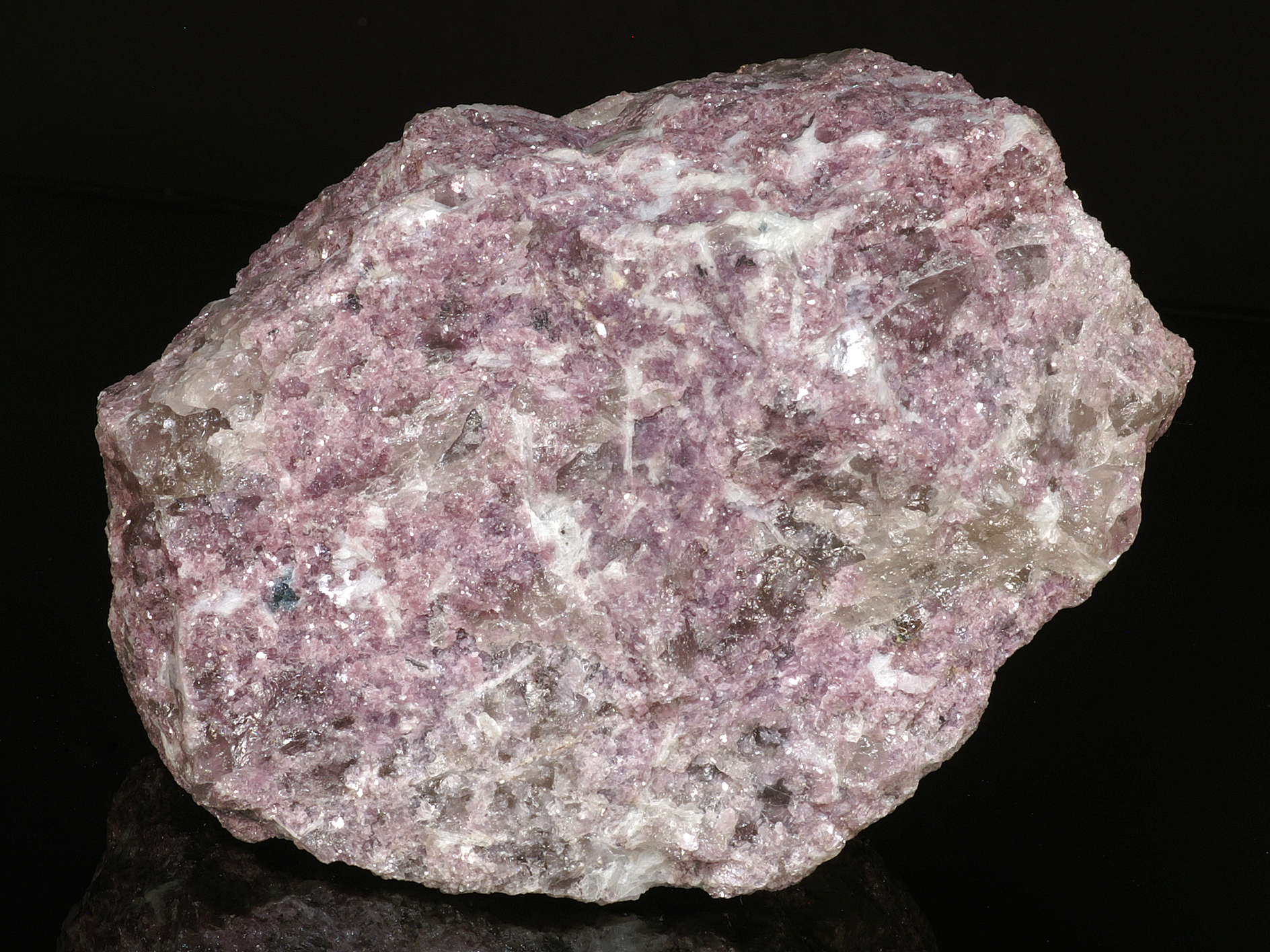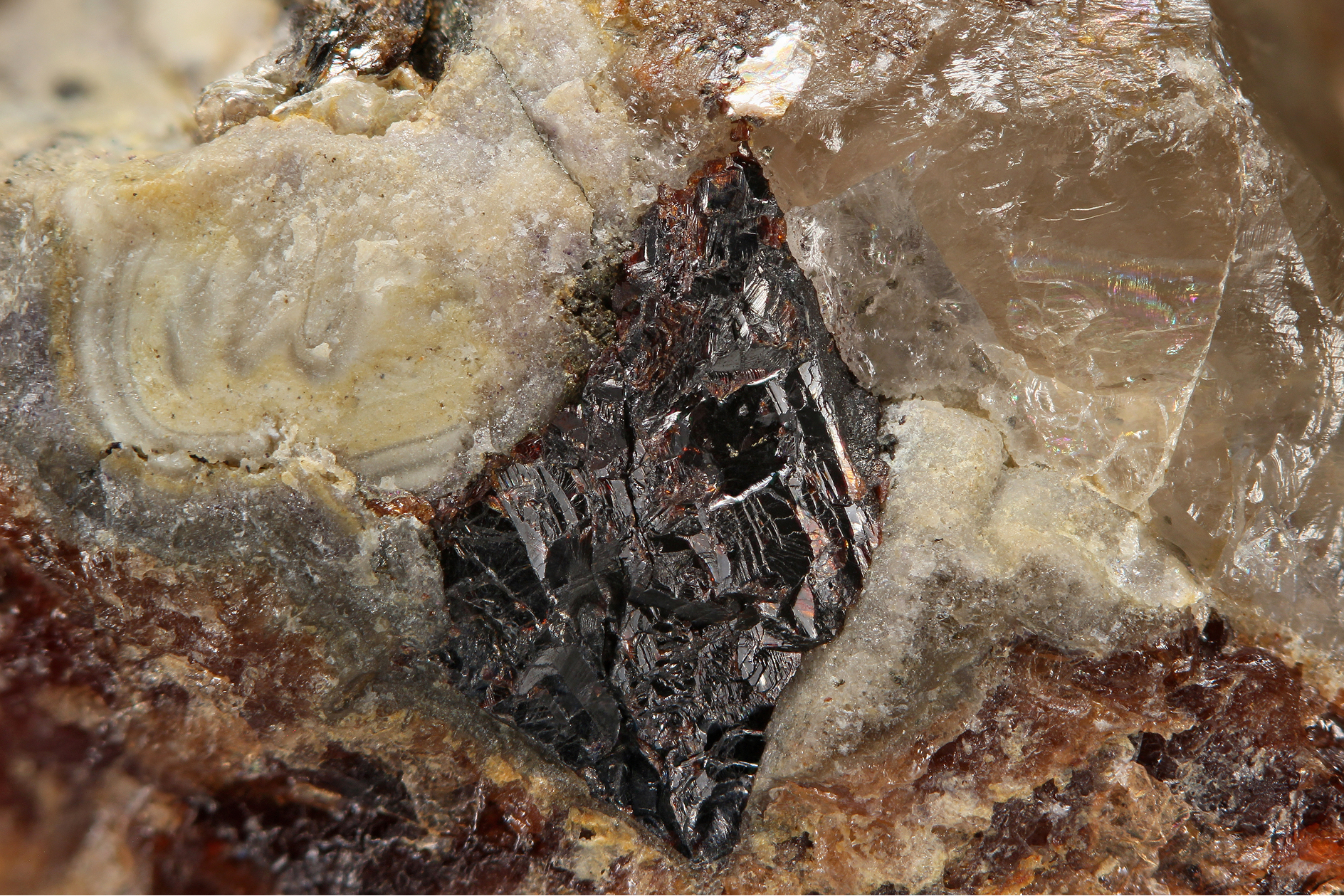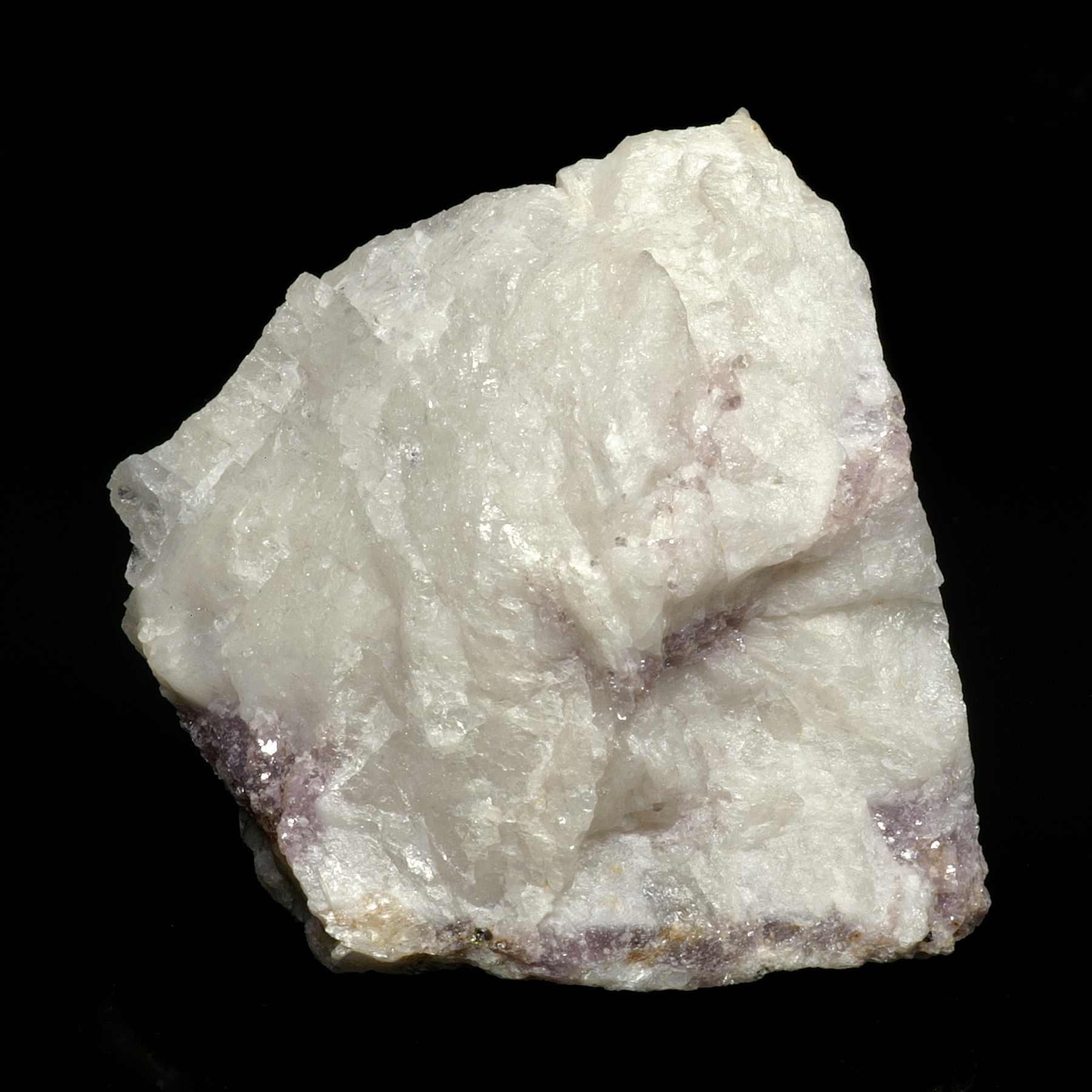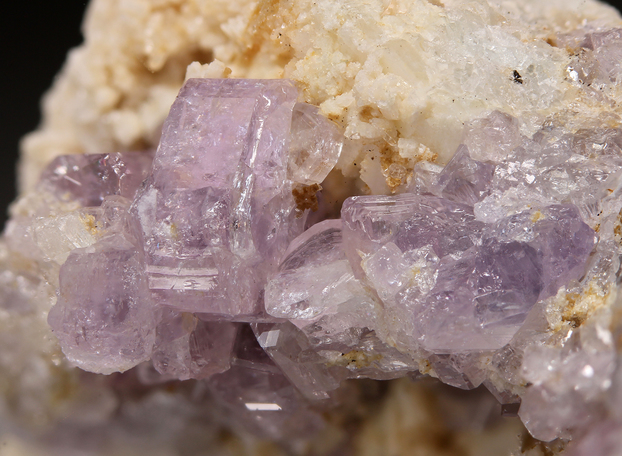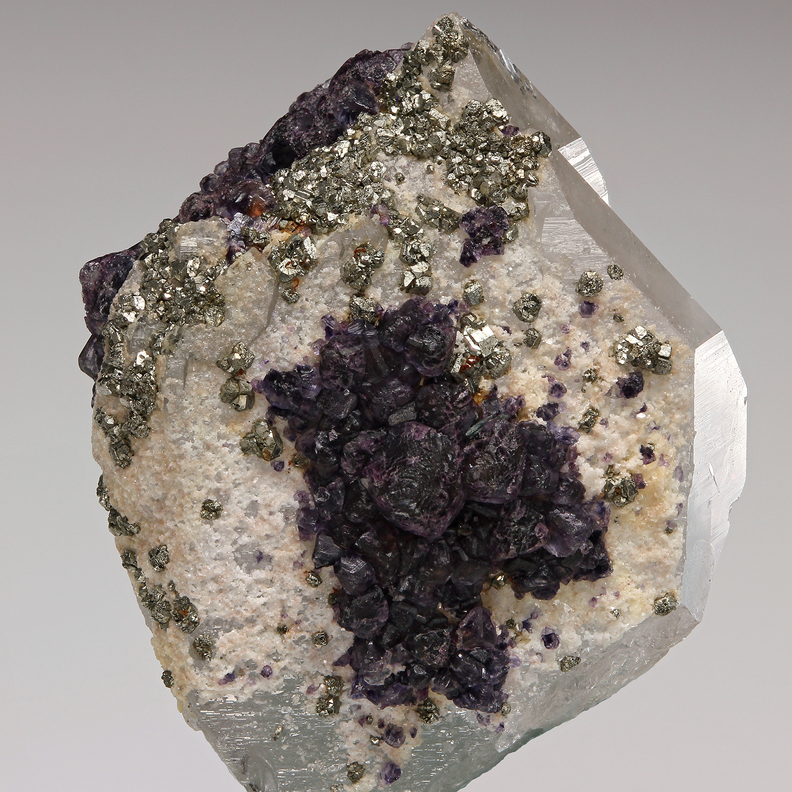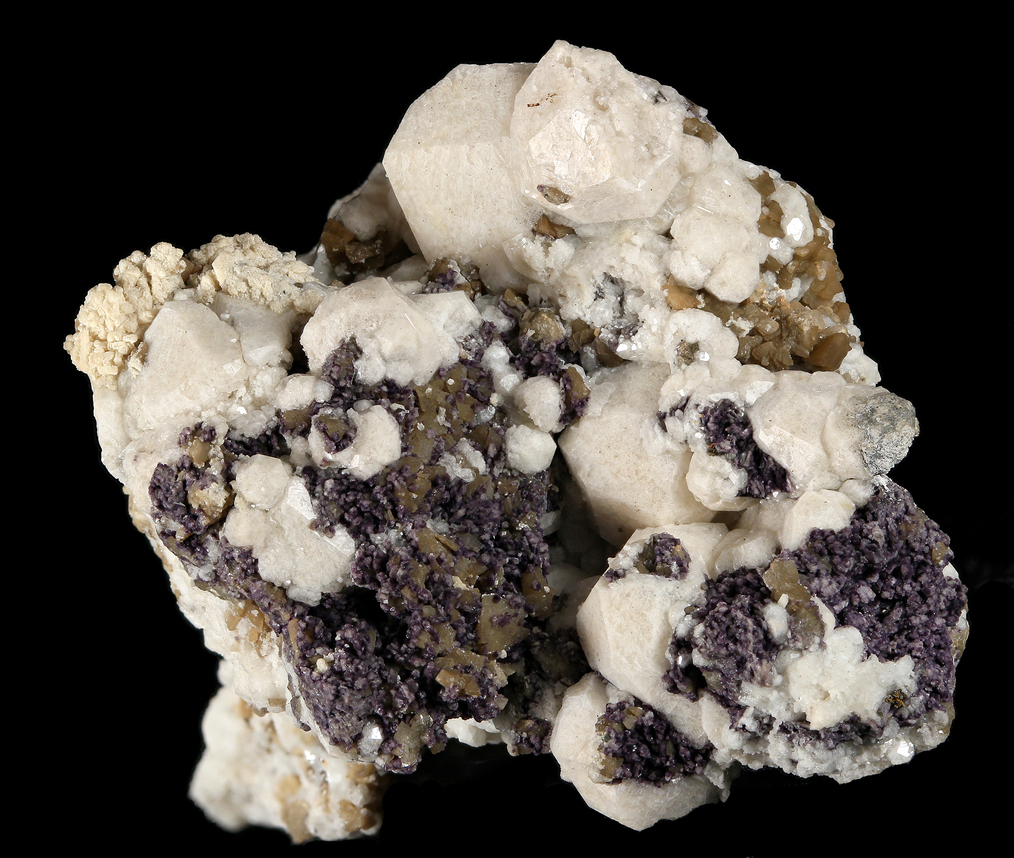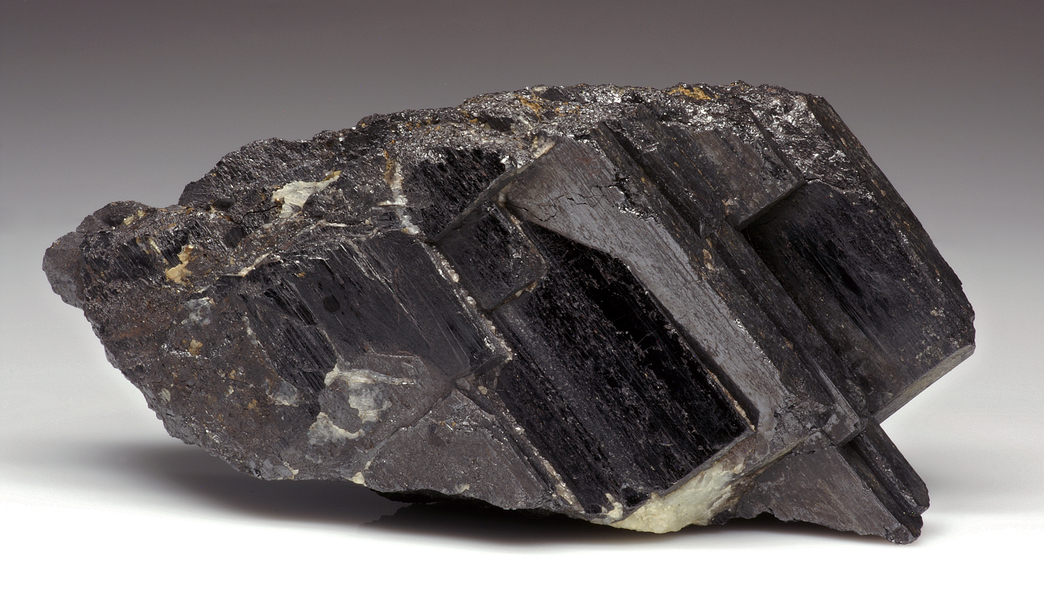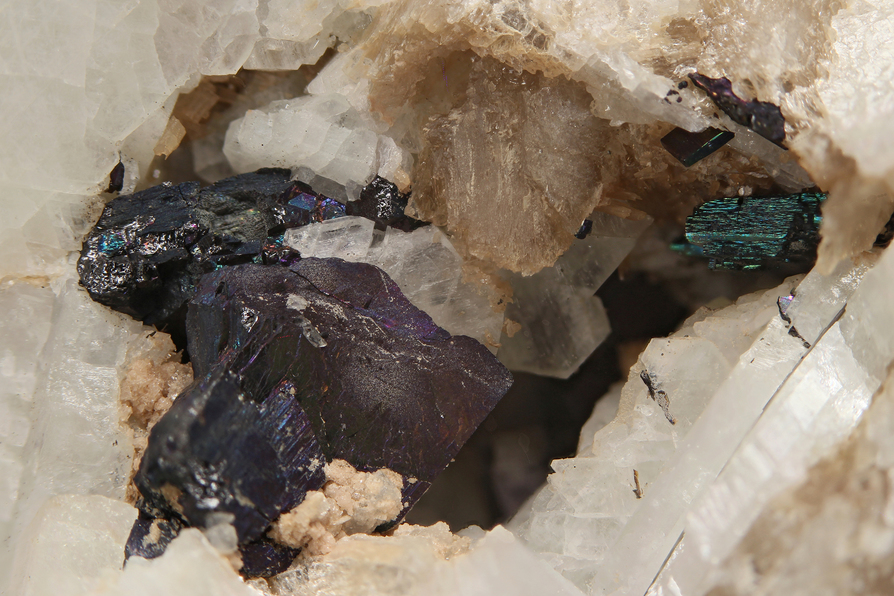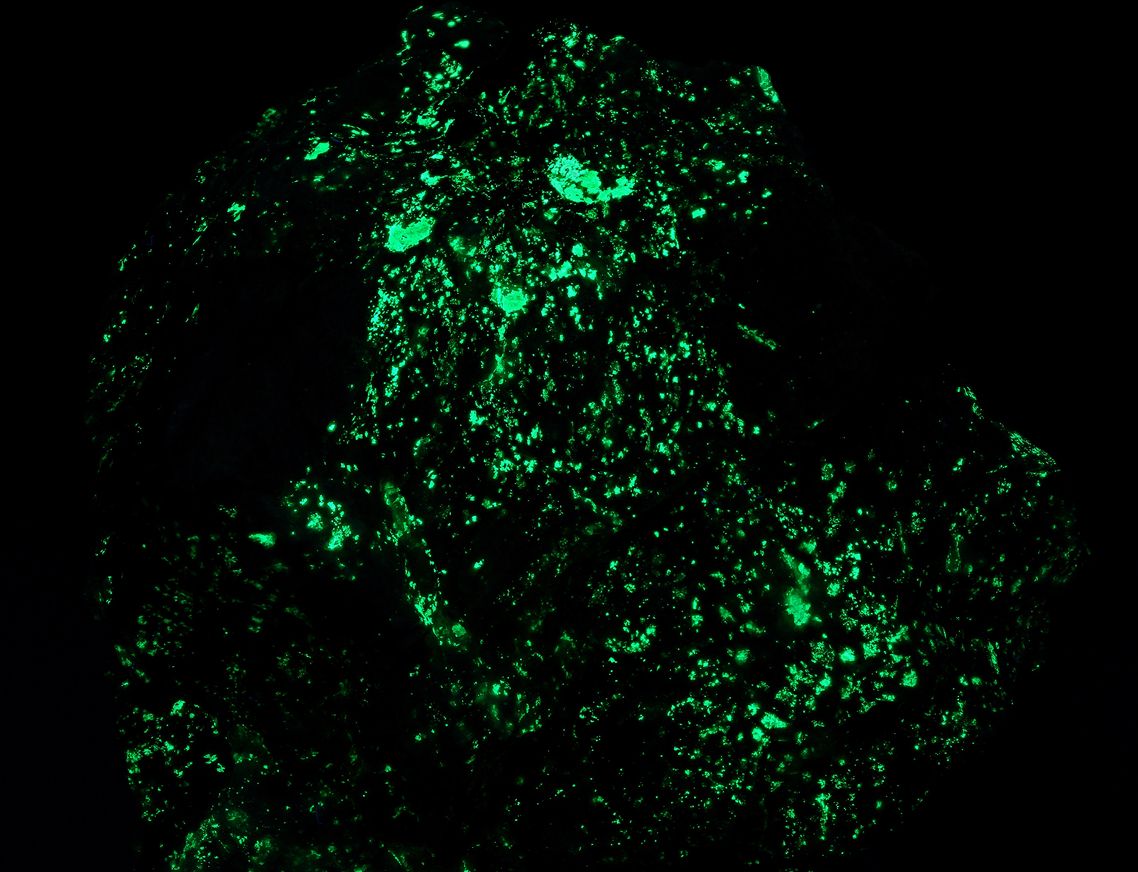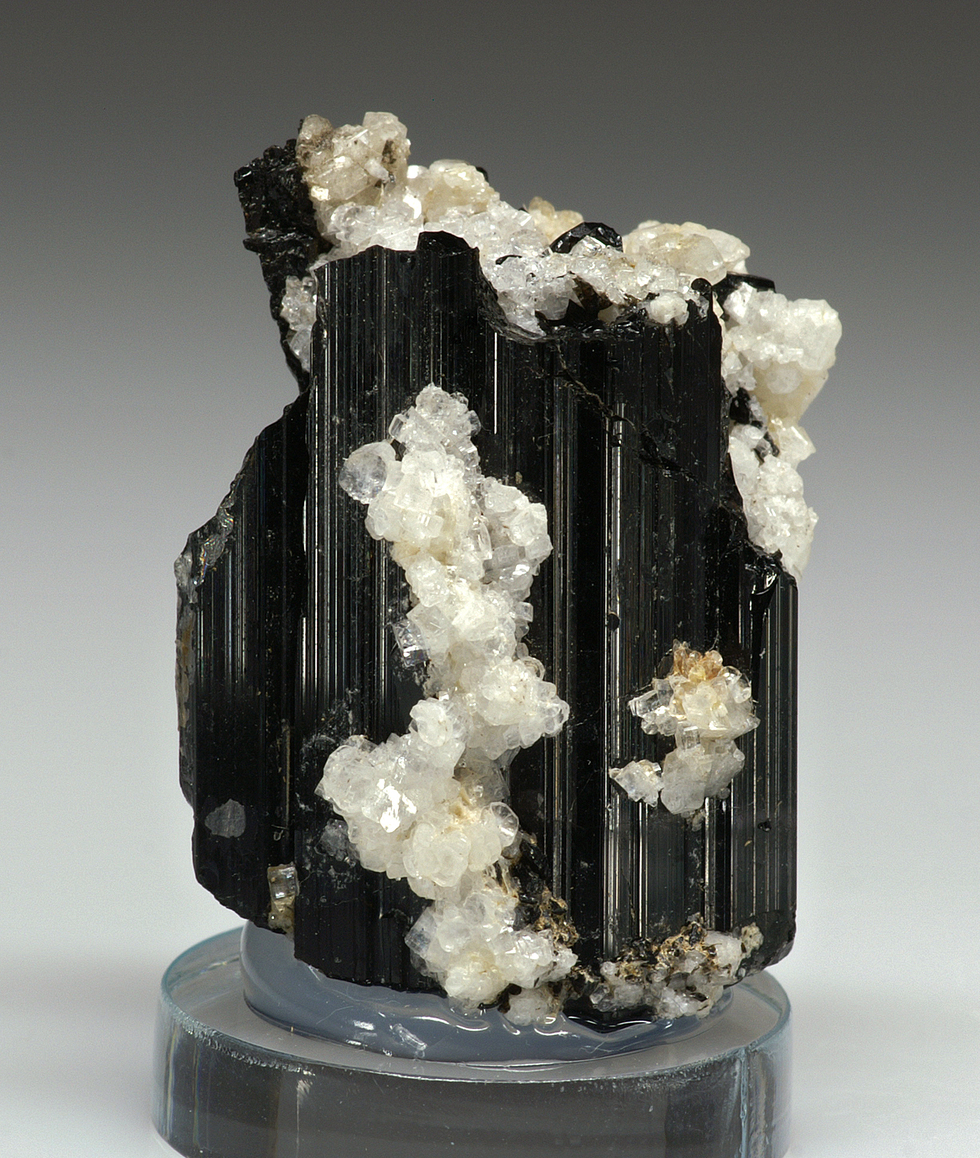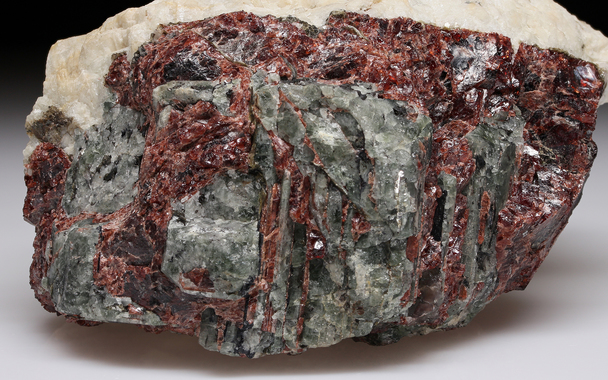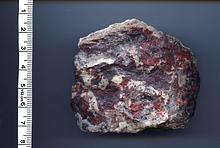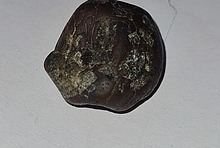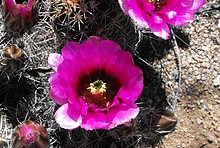History and Mineralology of the Strickland Quarry
Last Updated: 28th Nov 2016By Rowan Lytle
The Strickland Quarry is debatably the most famous locality in Connecticut. The amount of minerals it produced was impressive, as was the quality of specimans. Strickland lies on the eastern side of Collins Hill in Portland, Connecticut.
History:
The Strickland quarry was operated for high-grade feldspar and from 1904 to 1960s. There is some speculation of the date the operation was started. It is possible that operations began in the 1840's. The owner from 1904 to 1945 was Mr. F. E. Strickland. He collected many interesting specimans from his quarry, and these can be found in some old collections. The nearby Schoonmaker/Cramer Mine, an underground operation, was not connected to the Strickland Quarry. However, Strickland did have some underground workings. The larger northern dumps belonged to the Schoonmaker mine.
The Strickland Quarry was leased to Eureka Flint & Spar Co., Eureka Mining & Operating Co., or Eureka Mica & Mining Co. The operators after Strickland were George Wilkes, and then William Wilkes. As well as faldspar and mica production, Strickland is noted for beryl, gem, and quartz production. Operations ended in the 1960s.
While the quarry was owned by Strickland, collectors could work in the dumps. They were allowed to keep anything that wasn't particularly gemmy. These were given to Strickland, and would eventualy be sold. Specimans found while working the quarry were sometimes sold to visitors. According to W. G. Foye's article "Mineral Localities in the Vicinity of Middletown, Connecticut", Strickland was "...an expert on the minerals of his quarry, and save(d) carefully any unusual crystals."
Collecting in the dumps continued into the 1990's until the property was bought and developed into a golf course. Although the dumps and flooded pit still remain, collecting isn't allowed. It is possible that, in the future, a very generous person will own property with a portion of the dumps on it and allow collectors to dig there.
maps at:
pubs.usgs.gov/pp/0255/plate-48.pdf
pubs.usgs.gov/pp/0255/plate-47.pdf
Minerals:
One of the most notable localities in Connecticut for tourmaline is Strickland. Not only is the quarry described to have produced the only asbestiform tourmaline found in the state, but many specimens of high quality blue-green Elbaite were found in miarolitic cavities in cleavalandite. After operations ceased, nice Elbaites could still be found in the dump, but it is likely that none were as good as ones discovered while the quarry was operating. Earl V. Shannon described a crystal he found on the dumps in his article:
"The writer picked up one mass weighing approximately three kilograms and completely encrusted with the brown secondary crust. When split this mass was found to be a single crystal aggregate of tourmaline, purplish at the base, rubellite pink in the central portion and green in the upper third"(52-53).
Spodumene, beryl, lepidolite, cleavelindite, and quartz from the quarry are also of note. Nail-head calcite is described as coming from the quarry by Foye.
Calcite was found in small cavities in the cleavelandite. They were micro sized rounded crystals or cleavage masses.
Some Spodumenes from Strickland may have been gemmy, but most crystals I have seen are by no means translucent. Strickland spods are known to give off beautiful orange phosphorescence. Shannon describes there size as "...crystals up to 3 dm. in length..."(52). Unlike Branchville material, it never altered to cymatolite. Some did alter to what Shannon describes as "...a woody, fibrous substance like anthophyllite in appearance"(52)
Gem aquamarines were uncovered in the dump and quarry, some quite large. Other beryls found were green (common beryl), Heliodor, and Morganite. Some of the best Connecticut beryls the author has seen were found at Strickland.
The cleavelandite was often a light blue color, and ranged from course to very fine grained. Small cavities between cleavelandite crystals housed nice columbite crystals, small smoky quartz crystals, pyrite, and K-feldspar.
Quartz crystals were normally smoky or milky, some with an interesting yellow tinge. It was described as citrine by Foye, and it is quite probable. some crystals had tourmaline inclusions. There may have also been some rose quartz found. Some larger quartz crystals ended up in museums, and one particular cluster is in the Wesleyan Mineral Museum. Very rarely, an amethyst specimen would turn up. One such the writer has seen was a scepter cluster photographed by Harold Moritz.
The lepidolite was found in mostly fine grained masses, some being rather large. However, there was some course material found.
Triplite was occasionally found at Strickland, but was not common.
Rather ugly petalite was found from time to time.
A rather significant amount of annite was present at Strickland. A particularly interesting annite was found by the author's father, in association with columbite.
Montebrasite was found in the cleavelandite, although they were very poor as specimens. The were almost all massive.
The purple apatite from this quarry is particularly notable. They were often well formed and transparent, although not all that big.
Pockets produced decent pyrite, flourite, analcime, bertrandite, and sphalerite specimens from time to time. The
bertrandite was actually rather nice, with good transparent crystals found. Most of these minerals were on a bed of K-rich albite, or platy cleavelandite.
Fine tantalites were found in some pockets. These were deep maroon, elongated prisms.
Strickland produced world class wodginite, tapered crystals up to 6cm. They were often translucent.
Excellent, large columbites formed in pockets and cleavelandite. Many double terminated crystals were produced, and are a joy to own. Sub parallel groups up to around 15cm were found, although the pocket columbites were only micros. These often have vivid iridescence
During operations, Strickland produced a descent amount of uraninite. According to Foye, "The greater part of the uraninite from Portland has come from a small area near the hanging wall of the quarry." The writer has seen some nice specimens, and has one minor piece, but it would certainly be nice to see this supposed amount all together.
Uranium secondaries there aren't often acknowledged as being prominent here, but some average specimens of torbernite, autunite, and uranophane.
Schorl crystals were mostly shattered, but some descent crystals were found in the pegmatite and the surrounding schist. Some schorls from the pocket zones graded up to elbaite at the termination. These make very attractive specimens,
and one of the author's favorite specimens from Strickland is one such piece. It also has some balls of cookite on it.
Almandine was frequent in small gem crystals. Larger crystals were found, and were still sharply formed! They rival the almandine from the nearby Nathan Hall, which are large and very nice. Some attractive combos of massive green Mn-bearing flourapatite and almandine were also found.
Some interesting specimens of zinnwaldite mica were found, although not frequently. Some was fine grained and formed interesting wavy patterns, while others were little crystals scattered in matrices. It looks rather like lepidolite.
Some nice zircon was found, although small. They are similar to those found at the other pegmatites in central CT.
Monazite crystals were occasionally found.
Minerals found in the schist formations around the pegmatite include rutile, garnet, zoisite(?), and cordierite (var. iolite).
More information:
Other articles:
Earl V. Shannon
www.minsocam.org/ammin/AM5/AM5_51.pdf
W. G. Foye
www.minsocam.org/msa/collectors_corner/arc/cnmiddletown.htm
Mindat Page:
www.mindat.org/loc-3708.html
Refrences
-Shannon, Earl V. (1920): Strickland's Quarry, Portland Connecticut (American Mineralogist 5:51-54)
-Foye, W. G. (1922): Mineral Localities in the Vicinity of Middletown, Connecticut (American Mineralogist 7:4-12)
-Mindat. 19 November 2011. www.mindat.org/loc-3708.html
-Rowan M. Lytle Mineral Collection
-Christian R. Lytle Mineral Collection
Photos Courtesy Harold Moritz
History:
The Strickland quarry was operated for high-grade feldspar and from 1904 to 1960s. There is some speculation of the date the operation was started. It is possible that operations began in the 1840's. The owner from 1904 to 1945 was Mr. F. E. Strickland. He collected many interesting specimans from his quarry, and these can be found in some old collections. The nearby Schoonmaker/Cramer Mine, an underground operation, was not connected to the Strickland Quarry. However, Strickland did have some underground workings. The larger northern dumps belonged to the Schoonmaker mine.
The Strickland Quarry was leased to Eureka Flint & Spar Co., Eureka Mining & Operating Co., or Eureka Mica & Mining Co. The operators after Strickland were George Wilkes, and then William Wilkes. As well as faldspar and mica production, Strickland is noted for beryl, gem, and quartz production. Operations ended in the 1960s.
While the quarry was owned by Strickland, collectors could work in the dumps. They were allowed to keep anything that wasn't particularly gemmy. These were given to Strickland, and would eventualy be sold. Specimans found while working the quarry were sometimes sold to visitors. According to W. G. Foye's article "Mineral Localities in the Vicinity of Middletown, Connecticut", Strickland was "...an expert on the minerals of his quarry, and save(d) carefully any unusual crystals."
Collecting in the dumps continued into the 1990's until the property was bought and developed into a golf course. Although the dumps and flooded pit still remain, collecting isn't allowed. It is possible that, in the future, a very generous person will own property with a portion of the dumps on it and allow collectors to dig there.
maps at:
pubs.usgs.gov/pp/0255/plate-48.pdf
pubs.usgs.gov/pp/0255/plate-47.pdf
Minerals:
One of the most notable localities in Connecticut for tourmaline is Strickland. Not only is the quarry described to have produced the only asbestiform tourmaline found in the state, but many specimens of high quality blue-green Elbaite were found in miarolitic cavities in cleavalandite. After operations ceased, nice Elbaites could still be found in the dump, but it is likely that none were as good as ones discovered while the quarry was operating. Earl V. Shannon described a crystal he found on the dumps in his article:
"The writer picked up one mass weighing approximately three kilograms and completely encrusted with the brown secondary crust. When split this mass was found to be a single crystal aggregate of tourmaline, purplish at the base, rubellite pink in the central portion and green in the upper third"(52-53).
Spodumene, beryl, lepidolite, cleavelindite, and quartz from the quarry are also of note. Nail-head calcite is described as coming from the quarry by Foye.
Calcite was found in small cavities in the cleavelandite. They were micro sized rounded crystals or cleavage masses.
Some Spodumenes from Strickland may have been gemmy, but most crystals I have seen are by no means translucent. Strickland spods are known to give off beautiful orange phosphorescence. Shannon describes there size as "...crystals up to 3 dm. in length..."(52). Unlike Branchville material, it never altered to cymatolite. Some did alter to what Shannon describes as "...a woody, fibrous substance like anthophyllite in appearance"(52)
Gem aquamarines were uncovered in the dump and quarry, some quite large. Other beryls found were green (common beryl), Heliodor, and Morganite. Some of the best Connecticut beryls the author has seen were found at Strickland.
The cleavelandite was often a light blue color, and ranged from course to very fine grained. Small cavities between cleavelandite crystals housed nice columbite crystals, small smoky quartz crystals, pyrite, and K-feldspar.
Quartz crystals were normally smoky or milky, some with an interesting yellow tinge. It was described as citrine by Foye, and it is quite probable. some crystals had tourmaline inclusions. There may have also been some rose quartz found. Some larger quartz crystals ended up in museums, and one particular cluster is in the Wesleyan Mineral Museum. Very rarely, an amethyst specimen would turn up. One such the writer has seen was a scepter cluster photographed by Harold Moritz.
The lepidolite was found in mostly fine grained masses, some being rather large. However, there was some course material found.
Triplite was occasionally found at Strickland, but was not common.
Rather ugly petalite was found from time to time.
A rather significant amount of annite was present at Strickland. A particularly interesting annite was found by the author's father, in association with columbite.
Montebrasite was found in the cleavelandite, although they were very poor as specimens. The were almost all massive.
The purple apatite from this quarry is particularly notable. They were often well formed and transparent, although not all that big.
Pockets produced decent pyrite, flourite, analcime, bertrandite, and sphalerite specimens from time to time. The
bertrandite was actually rather nice, with good transparent crystals found. Most of these minerals were on a bed of K-rich albite, or platy cleavelandite.
Fine tantalites were found in some pockets. These were deep maroon, elongated prisms.
Strickland produced world class wodginite, tapered crystals up to 6cm. They were often translucent.
Excellent, large columbites formed in pockets and cleavelandite. Many double terminated crystals were produced, and are a joy to own. Sub parallel groups up to around 15cm were found, although the pocket columbites were only micros. These often have vivid iridescence
During operations, Strickland produced a descent amount of uraninite. According to Foye, "The greater part of the uraninite from Portland has come from a small area near the hanging wall of the quarry." The writer has seen some nice specimens, and has one minor piece, but it would certainly be nice to see this supposed amount all together.
Uranium secondaries there aren't often acknowledged as being prominent here, but some average specimens of torbernite, autunite, and uranophane.
Schorl crystals were mostly shattered, but some descent crystals were found in the pegmatite and the surrounding schist. Some schorls from the pocket zones graded up to elbaite at the termination. These make very attractive specimens,
and one of the author's favorite specimens from Strickland is one such piece. It also has some balls of cookite on it.
Almandine was frequent in small gem crystals. Larger crystals were found, and were still sharply formed! They rival the almandine from the nearby Nathan Hall, which are large and very nice. Some attractive combos of massive green Mn-bearing flourapatite and almandine were also found.
Some interesting specimens of zinnwaldite mica were found, although not frequently. Some was fine grained and formed interesting wavy patterns, while others were little crystals scattered in matrices. It looks rather like lepidolite.
Some nice zircon was found, although small. They are similar to those found at the other pegmatites in central CT.
Monazite crystals were occasionally found.
Minerals found in the schist formations around the pegmatite include rutile, garnet, zoisite(?), and cordierite (var. iolite).
More information:
Other articles:
Earl V. Shannon
www.minsocam.org/ammin/AM5/AM5_51.pdf
W. G. Foye
www.minsocam.org/msa/collectors_corner/arc/cnmiddletown.htm
Mindat Page:
www.mindat.org/loc-3708.html
Refrences
-Shannon, Earl V. (1920): Strickland's Quarry, Portland Connecticut (American Mineralogist 5:51-54)
-Foye, W. G. (1922): Mineral Localities in the Vicinity of Middletown, Connecticut (American Mineralogist 7:4-12)
-Mindat. 19 November 2011. www.mindat.org/loc-3708.html
-Rowan M. Lytle Mineral Collection
-Christian R. Lytle Mineral Collection
Photos Courtesy Harold Moritz
Article has been viewed at least 20163 times.






